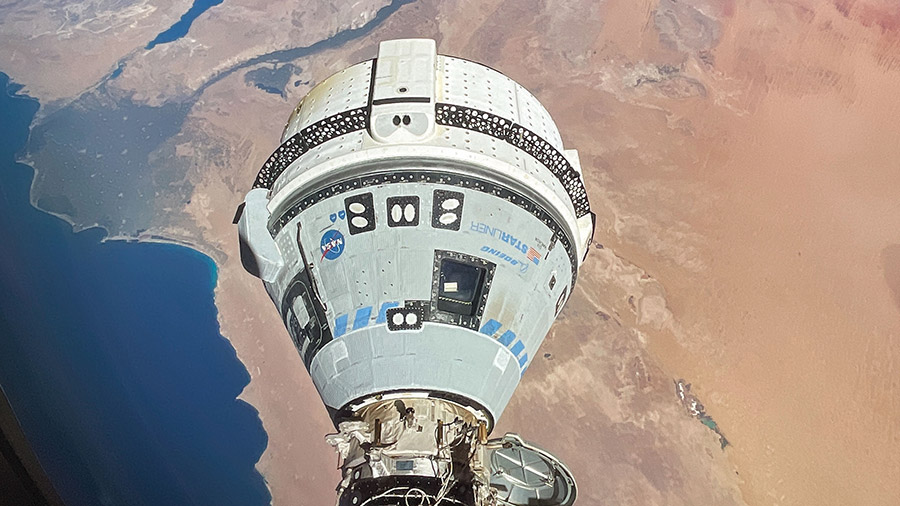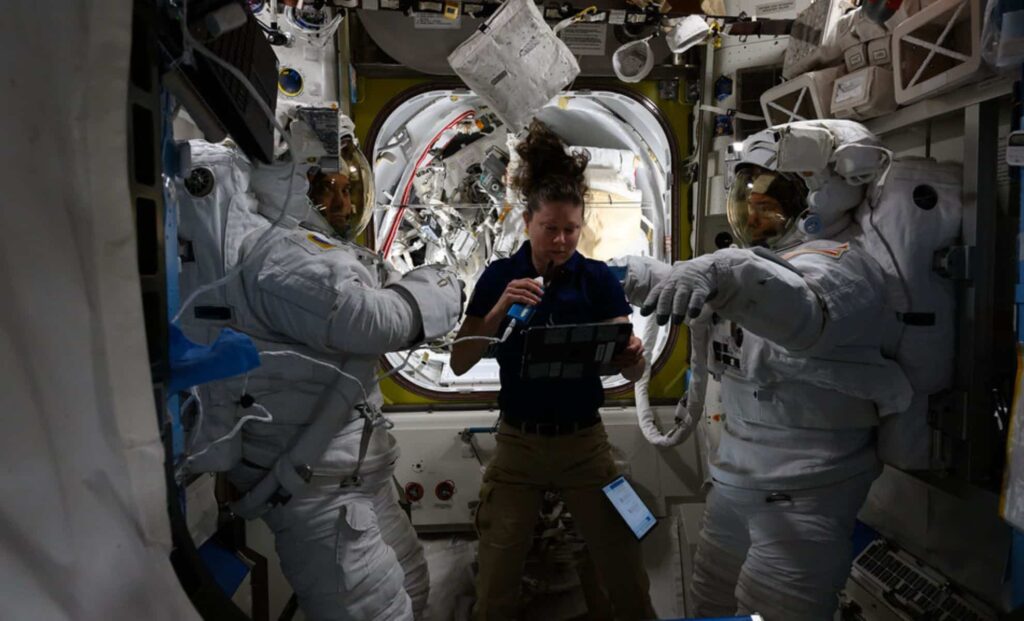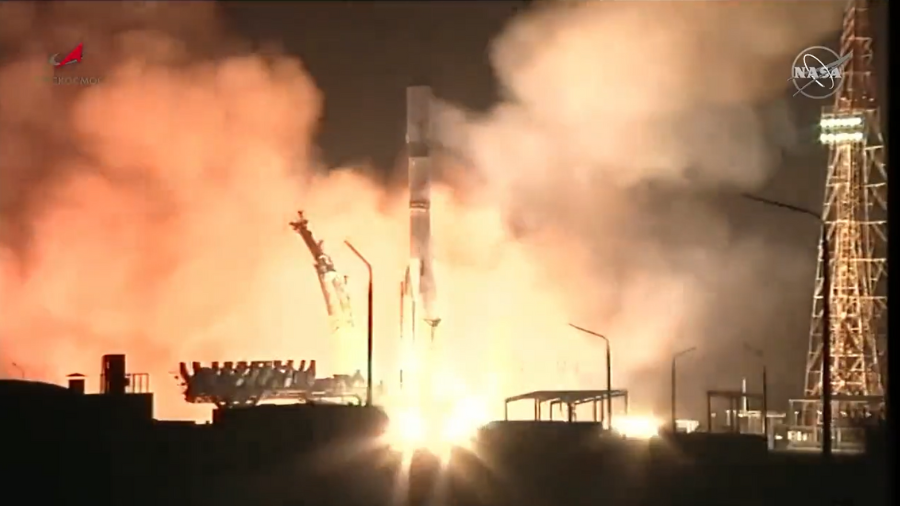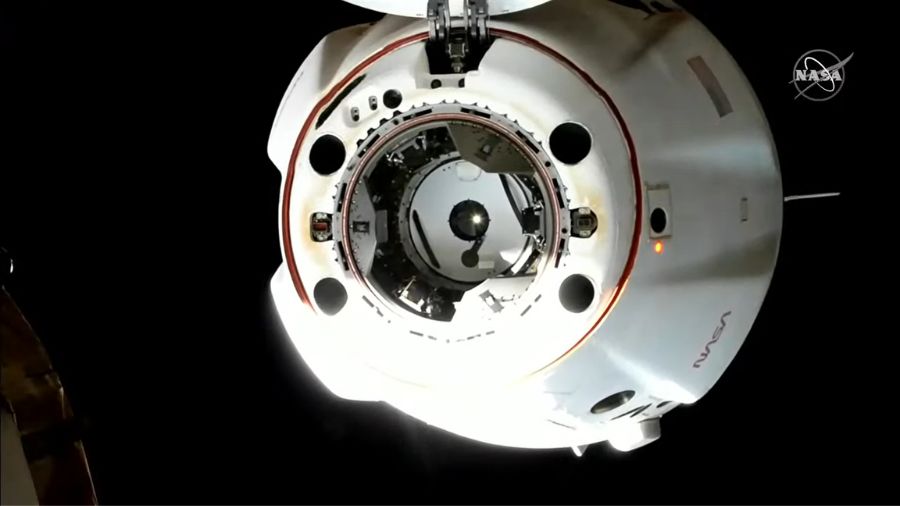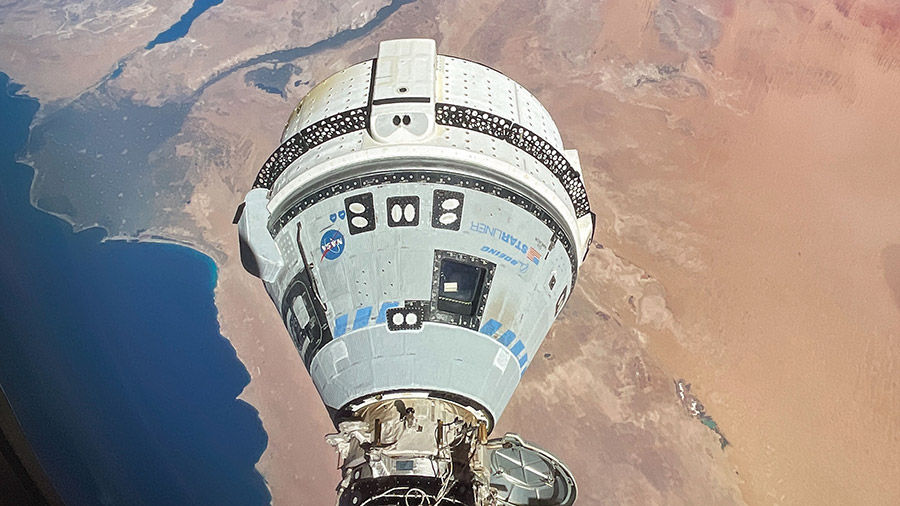
The Expedition 71 crew turned its attention to an upcoming U. S. cargo mission, spacesuit work, and a variety of life science on Monday. NASA’s Boeing Crew Flight Test members began the week servicing their Starliner flight suits and the spacecraft’s life support systems following a morning of light research duties.
The next cargo mission to resupply the residents living and working aboard the International Space Station is counting down to a launch at 11:28 a.m. EDT on Saturday from Kennedy Space Center in Florida. Northrop Grumman’s Cygnus space freighter will launch atop a SpaceX Falcon 9 rocket carrying 8,200 pounds of science, supplies, and hardware for the station. Cygnus will orbit Earth for just over a day-and-a-half before approaching the orbital outpost where the Canadarm2 robotic arm will be waiting to capture the spacecraft.
NASA Flight Engineers Matthew Dominick and Jeanette Epps spent Monday preparing for Cygnus’ arrival reviewing its mission profile and practicing robotic capture maneuvers on a computer. Dominick will command the Canadarm2 to capture Cygnus at 5 a.m. on Aug. 5 while Epps backs him up and monitors the approach and rendezvous activities. Afterward, robotics controllers on the ground will remotely take over Canadarm2 and guide Cygnus toward the Unity module’s Earth-facing port where it will be mated for five-and-a-half months.
NASA Flight Engineer Mike Barratt kicked off his day checking on plumbing hardware stowed in the Zarya module before swapping components and configuring a U.S. spacesuit in the Quest airlock. NASA astronaut Tracy C. Dyson spent her morning in the Columbus laboratory module troubleshooting the MARES rack, or Muscle Atrophy Research and Exercise System, then spent the afternoon installing drawer handle brackets on a pair of Human Research Facility racks.
Starliner Commander Butch Wilmore and Pilot Suni Williams entered their spacecraft Monday afternoon and checked its water systems, called down to Boeing mission personnel for a conference, then wore their flight suits momentarily for a pressure test. Wilmore started his morning in the station’s Harmony module assembling the BioServe centrifuge as Williams reviewed procedures for operating the Astrobee free-flying robotic assistants.
The orbiting lab’s three cosmonauts refocused their activities on Monday to standard space research and lab maintenance duties following a week of inspection tasks in the orbital outpost’s Roscosmos segment. Flight Engineer Nikolai Chub worked all day on science first studying a 3D printer’s ability to manufacture tools in microgravity, then explored how magnetic and electrical fields affect fluid physics, before finally installing hardware to image Earth’s nighttime atmosphere in near-ultraviolet wavelengths. Flight Engineer Alexander Grebenkin attached sensors to himself during the morning for a 24-session measuring his heart rate and blood pressure. Afterward, he pointed a camera outside a station window taking pictures for a pair of Earth observation studies. At the beginning of his shift, station Commander Oleg Kononenko installed radiation detection hardware cables then inventoried food rations.
Learn more about station activities by following the space station blog, @space_station and @ISS_Research on X, as well as the ISS Facebook and ISS Instagram accounts.
Get weekly video highlights at: https://roundupreads.jsc.nasa.gov/videoupdate/
Get the latest from NASA delivered every week. Subscribe here: www.nasa.gov/subscribe

